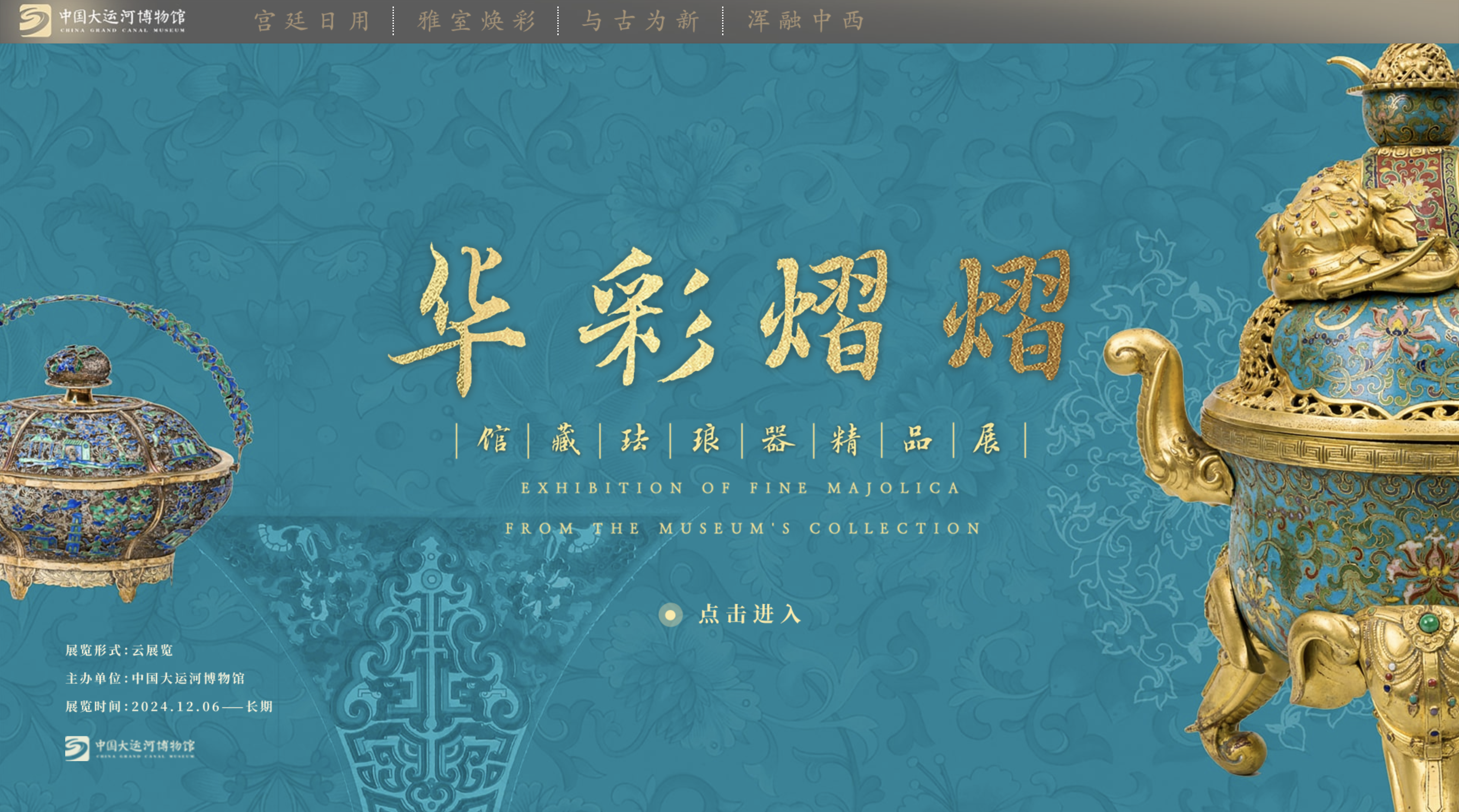Mobile: https://canalmuseum.net//digital-exhibition/FaLang/mobile/
PC: https://canalmuseum.net//digital-exhibition/FaLang/pc/
Enameling (falang) is an art form introduced to China from abroad. In ancient Chinese texts, it is also called “folin”, “folang”, “fulang”, and “falan”. Brought in during the Yuan Dynasty (1271–1368), enameling was gradually adapted and localized to become an integral part of Chinese craft traditions. It enjoyed particular favor from the imperial court during the Ming and Qing dynasties (1368–1912), fueling its continued development and leaving a lasting influence up to the present. Enameling can be classified into various techniques like cloisonné, painted enamel, plique-à-jour, and champlevé. Among these techniques, cloisonné and painted enamel are widely employed, each with distinct origins, methods of transmission, manufacturing techniques, and stylistic hallmarks—so prominent that they define the art’s two highest achievements.
This exhibition presents more than 20 representative enamel artifacts from the China Grand Canal Museum’s collection. They are organized by function and category into four thematic sections: “Imperial Daily Utensils”, “Resplendent Ornaments”, “Tradition-Inspired Innovation”, and “A Blend of East and West”. Together, these pieces provide a captivating glimpse into the enamel artistry of the Ming and Qing dynasties, offering insights into the aesthetic tastes of emperors and aristocrats of the time.










